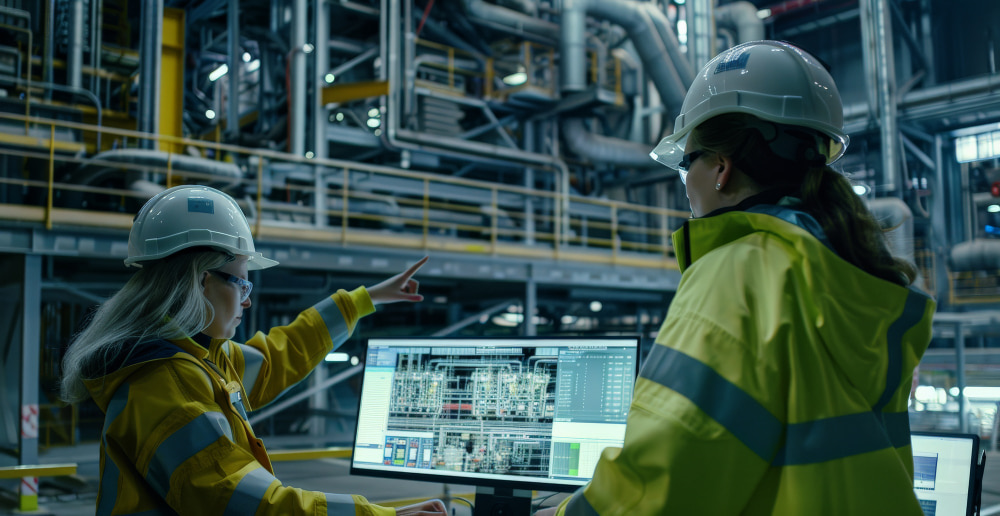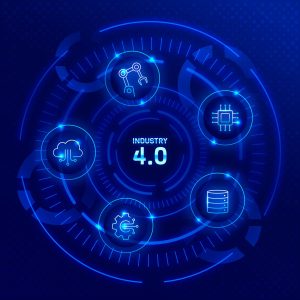The way industries monitor and maintain their assets is undergoing a radical transformation. Driven by the advent of Industry 4.0, the rise of digital twins, and breakthroughs in artificial intelligence (AI) and the Internet of Things (IoT), asset condition monitoring is becoming smarter, more predictive, and more integrated than ever before. These advancements are not just enhancing operational efficiency—they are redefining how businesses approach maintenance, reliability, and asset lifecycle management.
The Evolution of Asset Condition Monitoring
Asset condition monitoring has traditionally relied on periodic inspections and reactive maintenance. However, with the integration of advanced technologies, the focus has shifted to real-time, data-driven, and predictive approaches. Today, businesses leverage AI, IoT, and digital twins to gain deeper insights into asset health, anticipate failures, and optimize performance.
Key Trends Shaping the Future
1. Digital Twins: The Virtual Mirror of Physical Assets
Digital twins are virtual replicas of physical assets, processes, or systems that enable real-time monitoring, simulation, and analysis. By creating a dynamic digital counterpart, organizations can predict maintenance needs, optimize performance, and extend asset lifespans.
- Real-Time Monitoring and Predictive Maintenance: Digital twins continuously collect and analyze data from sensors embedded in physical assets. This allows for the early detection of anomalies and the prediction of potential failures before they occur. For example, port authorities use digital twins to monitor docks, cranes, and shipping channels, optimizing loading schedules and addressing maintenance needs proactively.
- Enhanced Decision-Making: Digital twins provide a holistic view of asset health, enabling better decision-making around operational parameters such as speed, pressure, and workload. They are particularly valuable in complex industries like energy, manufacturing, and infrastructure, where they help streamline inspections and predictive maintenance strategies.
- Integration with AI and IoT: The power of digital twins is amplified when combined with AI and IoT. AI algorithms analyze vast amounts of data to identify patterns and predict outcomes, while IoT devices provide the real-time data necessary for accurate modeling.
2. Industry 4.0: The Connected Ecosystem
Industry 4.0 represents the fourth industrial revolution, characterized by the fusion of digital and physical technologies. It is transforming asset condition monitoring through:
- Smart Sensors and IoT: IoT sensors are becoming more affordable, energy-efficient, and versatile. They enable continuous, remote monitoring of asset conditions, such as temperature, vibration, and power consumption, providing real-time insights into performance and health.
- Predictive and Prescriptive Analytics: AI-powered analytics process data from connected devices to identify patterns indicative of wear and tear. This allows companies to take proactive measures, reducing unexpected downtime and optimizing maintenance schedules.
- Automation and Connectivity: Industry 4.0 fosters seamless communication and data exchange between assets and management systems. This interconnected ecosystem makes asset management software smarter and more responsive, enabling automated work orders, technician access, and customizable dashboards.
3. AI and Machine Learning: The Brains Behind the Operation
AI and machine learning are at the heart of modern asset condition monitoring. These technologies enable:
- Anomaly Detection: AI algorithms can process vibration, temperature, and other sensor data to detect early signs of equipment degradation.
- Optimized Maintenance Schedules: By analyzing historical and real-time data, AI helps schedule maintenance at the most opportune times, minimizing disruption and maximizing asset uptime.
- Cost Savings and Efficiency: Predictive maintenance powered by AI reduces the need for manual inspections and unplanned repairs, leading to significant cost savings and improved operational efficiency.
4. Blockchain for Transparency and Security
Blockchain technology is emerging as a tool for enhancing transparency and security in asset management. It enables the creation of tamper-proof records of asset history, maintenance, and transactions, ensuring data integrity and trust among stakeholders.
The Role of Nke Technica in Asset Condition Monitoring
Nke Technica is a global leader in providing innovative asset condition monitoring solutions. Their tailored approaches help businesses optimize operations, enhance equipment uptime, and reduce maintenance costs. Nke Technica’s solutions are designed to increase visibility of essential assets across worldwide operations, balancing dependability with cost-effectiveness.
- Comprehensive Monitoring: Nke Technica’s asset condition monitoring systems record the condition of industrial machinery in real-world operating environments, providing actionable insights for maintenance and performance optimization.
- Integration with Automation and Control Systems: By linking production, site, facility, and personnel data, Nke Technica enables organizations to automate repetitive tasks and optimize asset usage in manufacturing processes.
- Data-Driven Decision Making: Nke Technica empowers businesses to utilize enterprise data for analytics, automation, and AI-driven insights, supporting smarter and faster decision-making.
Beyond 2025: What’s Next?
Looking ahead, the future of asset condition monitoring will likely be shaped by:
- Edge Computing: Processing data closer to where it is generated (at the “edge”) will reduce latency and enable faster response times for critical maintenance decisions.
- Augmented Reality (AR) and Virtual Reality (VR): AR and VR can provide immersive training for maintenance personnel and remote assistance, further enhancing the efficiency and effectiveness of asset management.
- Sustainability and Energy Efficiency: As industries prioritize sustainability, asset condition monitoring will play a key role in optimizing energy use and reducing environmental impact.
Conclusion
The future of asset condition monitoring is bright, with digital twins, Industry 4.0, and AI leading the charge. These technologies are not only improving the reliability and performance of assets but also driving cost savings, operational efficiency, and sustainability. Companies like Nke Technica are at the forefront, delivering innovative solutions that help businesses stay competitive in an increasingly digital world.
By embracing these trends, organizations can unlock new levels of efficiency, reliability, and profitability, ensuring their assets—and their businesses—are future-ready.


